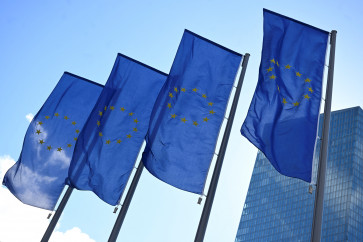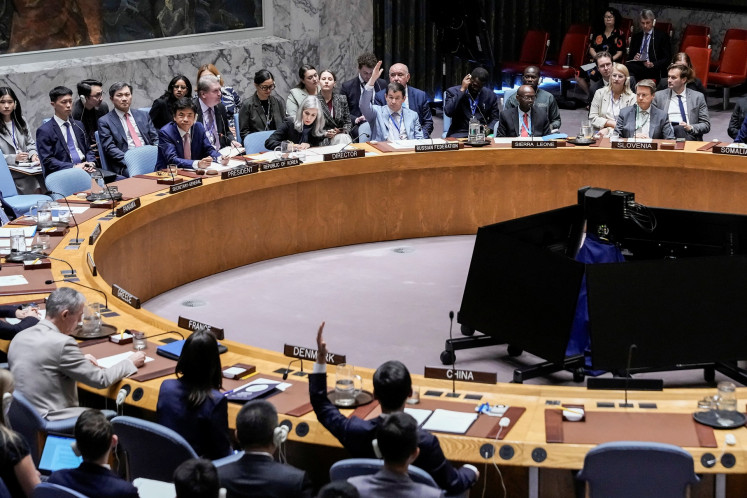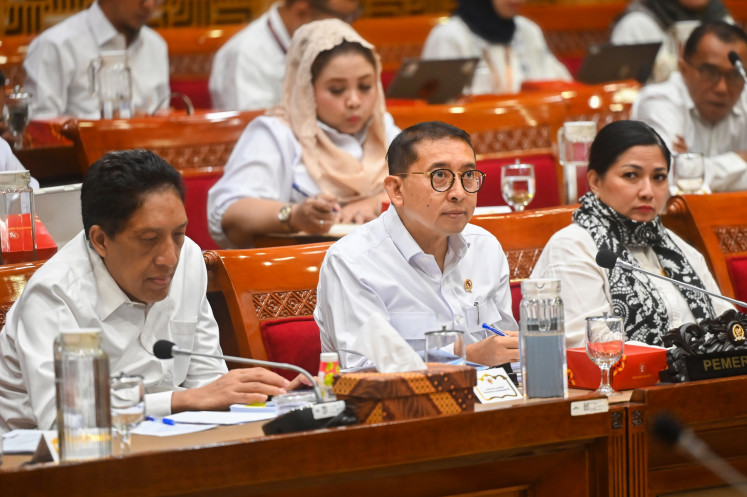Popular Reads
Top Results
Can't find what you're looking for?
View all search resultsPopular Reads
Top Results
Can't find what you're looking for?
View all search resultsRI exports increase 45 percent in H1
Exports rose almost 45 percent in the first half of 2010 thanks to a sharp increase in non-oil and gas exports , according to the latest data from the Central Statistics Agency (BPS)
Change text size
Gift Premium Articles
to Anyone
E
xports rose almost 45 percent in the first half of 2010 thanks to a sharp increase in non-oil and gas exports , according to the latest data from the Central Statistics Agency (BPS).
Exports reached US$72.52 billion between January and June, up 44.83 percent from the same period last year.
BPS data showed first semester non-oil-and-gas exports increased 38.37 percent to $59.36 billion from the same period in 2009.
Year-on-year mining export revenue increased 66.6 percent, export of industrial products increased 33.45 percent, and agriculture products increased 11.5 percent.
The government expects total exports to expand by 15 percent this year.
June exports, however, were 2.87 percent lower than the previous month, dropping to $12.29 billion from May’s $12.66 billion. The decrease was attributed to weak oil and gas exports, which slid 19.74 percent from $2.37 billion in May to $1.9 billion in June.
“Indonesian oil prices fell from $77.02 per barrel in May to $75.27 per barrel in June,” BPS said in its official statement.
Japan was still Indonesia’s main export destination during the first half of the year, purchasing $10.46 billion of Indonesian products, or 12.87 percent of total exports.
The United States ranked second with a total of $6.24 billion in purchases from Indonesia,
and China ranked third at $6.05 billion.
Former finance minister Sri Mulyani Indrawti, now a World Bank managing director, said the Indonesian economy could expand up to 5.8 percent this year based on stronger exports and increased investment.
Mulyani’s successor, Finance Minister Agus Martowardojo, believes Indonesia’s 2010 economic growth could reach 5.9 percent based on expectations of an even better export performance in the second half.
Realized foreign and domestic investments during the first semester of 2010 rose 39.9 percent from a year earlier to Rp 92.9 trillion, the Investment Coordinating Board announced last Thursday.
The agency expects total realized investments would reach Rp 160 trillion this year, up 18.52 percent from 2009.
BPS also announced that import growth showed significant movement because domestic demand had strengthened during the first half of the year.
Between January and June, imports grew 51.99 percent from the same period in 2009, reaching $62.89 billion.
Imports of non-oil-and-gas products grew to $49.77 billion, a 46.52 percent increase from the January — June period in 2009.
Indonesia imported the most goods from China ($8.99 billion or 18.07 percent of total market share), followed by Japan ($7.64 billion or 15.34 percent market share) and Singapore ($4.86 billion or 9.77 percent), BPS said.
Imports of consumer goods showed the most significant increase of 61.14 percent, followed by a 35.91 percent increase in capital goods.
“An increase in imported consumer goods has a limited impact on the overall economy, because consumer goods are used up relatively quickly.
More impressive would be an increase in imported capital goods capable of triggering multiplier effects throughout the overall economy,” BPS chief Rusman Heriawan said on Monday. (est)










